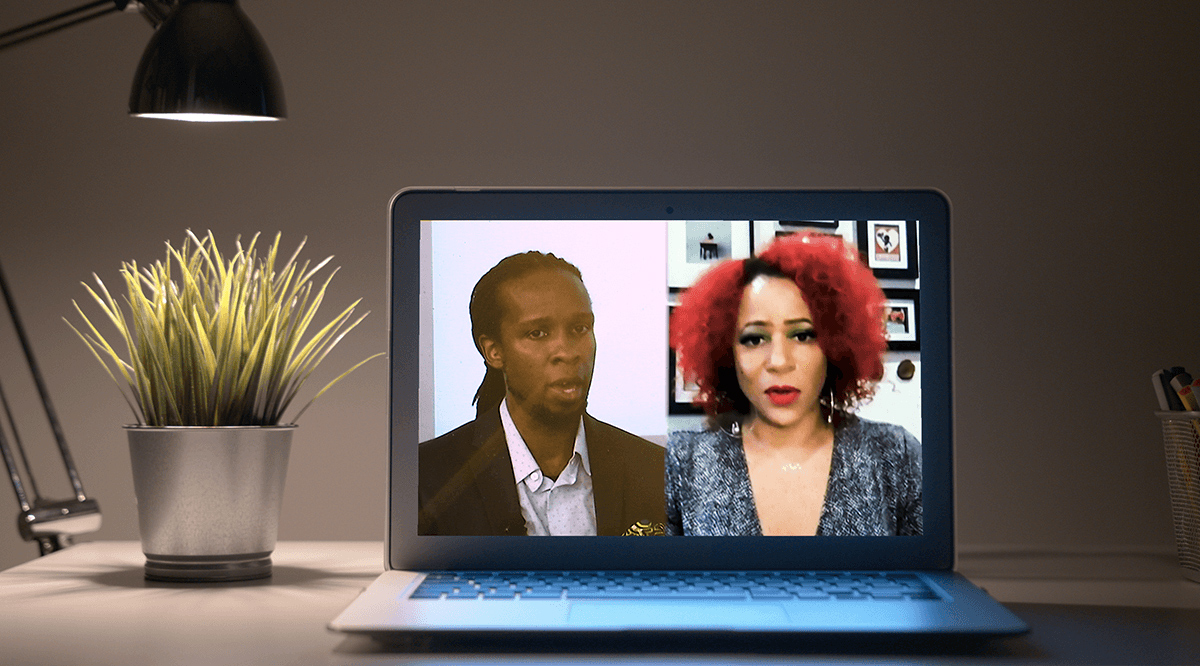
When Pulitzer Prize-winning investigative journalist Nikole Hannah-Jones needs medical care, she tries to seek out a Black doctor.
She knows that Black people historically have been the subjects of unethical experiments and mistreated by physicians. She knows that studies show that many doctors don’t believe Black people feel pain as much as White people and that they are less likely to prescribe certain treatments to Black patients. And she knows that her father and uncle, like a disproportionate number of Black Americans in general, died prematurely.
“We see this manifestation in painful ways all the time,” Hannah-Jones, who created the New York Times Magazine’s 1619 Project, told attendees during Learn Serve Lead 2020: The Virtual Experience on Monday, Nov. 16.
But finding a Black physician is not so easy, she pointed out, since just 5% of physicians in the United States are Black.
At the root of the disparities is stage 4 metastatic racism, said Ibram X. Kendi, PhD, the bestselling author of How to Be an Antiracist, the founder of the Boston University Center for Antiracist Research, and a cancer survivor.
Hannah-Jones and Kendi, both celebrated voices on racism in America, spoke candidly with AAMC President and CEO David J. Skorton, MD, during a plenary session entitled “Is There a Cure for Racism?” For almost two hours, they discussed racial disparities in health care and education, as well as the distrust of medicine — including a COVID-19 vaccine — among communities that have experienced oppression. But they also addressed ways that individuals and institutions can work toward “curing” the racism that plagues American society.
Preparing the pipeline
Hannah-Jones emphasized the importance of creating a K-12 education system that provides equal opportunities to students of color to pursue science and medicine before they enter higher education and consider what careers are open to them.
“We know that Black students are least likely to go to schools that have higher level sciences in their high schools,” she said. “They’re least likely to go to schools that have science labs in their high school. They’re already being systematically failed before they even think about becoming a doctor.”
It also doesn’t help that they see so few Black doctors as role models, she added.
In her reporting for the New York Times Magazine, Hannah-Jones found that historically Black colleges and universities (HBCUs) were more successful at sending Black students on to graduate from medical schools than historically White colleges, including Ivy League institutions.
She found that the HBCUs were better at meeting the students where they were, including filling in gaps in their primary and secondary education, than the more competition-driven programs that took more of a “weeding out” approach.
“They’re programs that are designed to kind of purge the students that you all don’t think are prepared enough,” Hannah-Jones said of the competition-driven programs. “That automatically eliminates so many talented, motivated Black students who simply haven’t had the same academic advantages of other kids.”
One of the barriers that also stunts progress for students from underprivileged backgrounds are standardized tests, Kendi said during a Q&A session.
When data show that Black and Latino students perform worse on tests than White and Asian students, “either there’s something wrong with the test, or there’s something wrong with the test-takers,” he said. “What if we stated that, actually, we should make sure everyone has equal opportunity as opposed to thinking something is wrong with Black and Brown children.”
Statements are a start, investment is better
Hannah-Jones acknowledged the statements supporting diversity training that the AAMC and other academic institutions have made in the months since George Floyd’s death, but she urged institutions to truly invest in dismantling the racism that exists in their own systems.
“When we talk about systemic inequality, it kind of alleviates us from acting,” she said. “We can kind of throw our hands up and say, ‘Well, it’s too big. It was created a long time ago. There’s nothing I can do personally.’ But that’s not true. … It was created intentionally, which means it can be intentionally undone. The question is: Are we willing to put the same amount of effort into undoing inequality as we did into creating it?”
One of the first steps in that process is to collect detailed demographic data on who is applying, being accepted to, and graduating from medical school, Kendi explained. This information can help leaders know where they might be falling short of their professed commitment to diversity and what policies they can change to correct the problems.
Beyond that, he noted that it’s important for institutions to have a protocol for safely reporting instances of harassment — be it racial, sexual, or some other form of discrimination — and an established way of responding to the instances.
“We have to … ensure that everyone can be their full selves when they enter into these spaces,” Kendi said.
Building trust in communities of color
With the fraught past and present relationship between the medical community and communities of color, Skorton expressed his concern that many people of color may — understandably — reject a COVID-19 vaccine.
“We do have a big hurdle to overcome in terms of trust,” Hannah-Jones agreed. “This is the problem: You can’t begin to do this work at the moment when you need the communities to trust you. You have to be spending time and years building that trust and have a track record of treating Black people equally and fairly within your institutions and we just don’t have that yet.”
Kendi also expressed skepticism that trust can be built in a matter of months, but he suggested that public health officials identify the leaders who are already trusted in the communities.
“I’m not just talking about pastors and political leaders. That’s too easy,” he said. “You really need to go into the community and talk to people and ask, ‘Who is well-respected? Who is trusted here?’”
He also pointed out that trust doesn’t just happen — it is earned by consistently enacting anti-racist policies.
And that, Kendi and Hannah-Jones agreed, is the cure for racism: anti-racist action.
“The cure is: You have to acknowledge what happened, you have to address what happened,” Hannah-Jones said. “And then we have to all agree that we will choose to undo the structures that racism created.”
